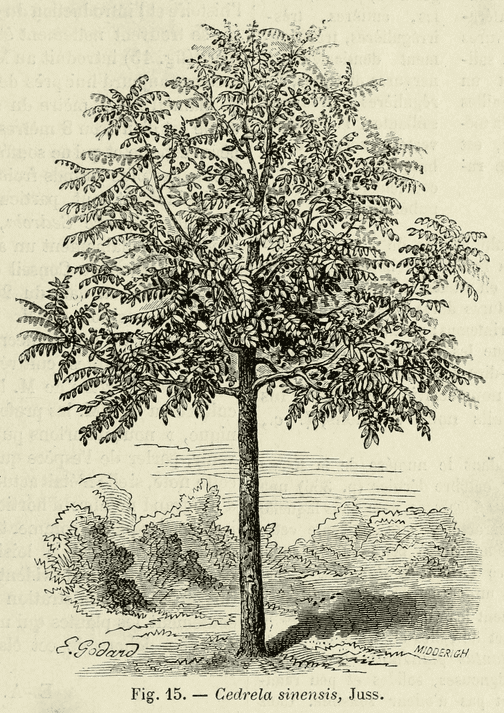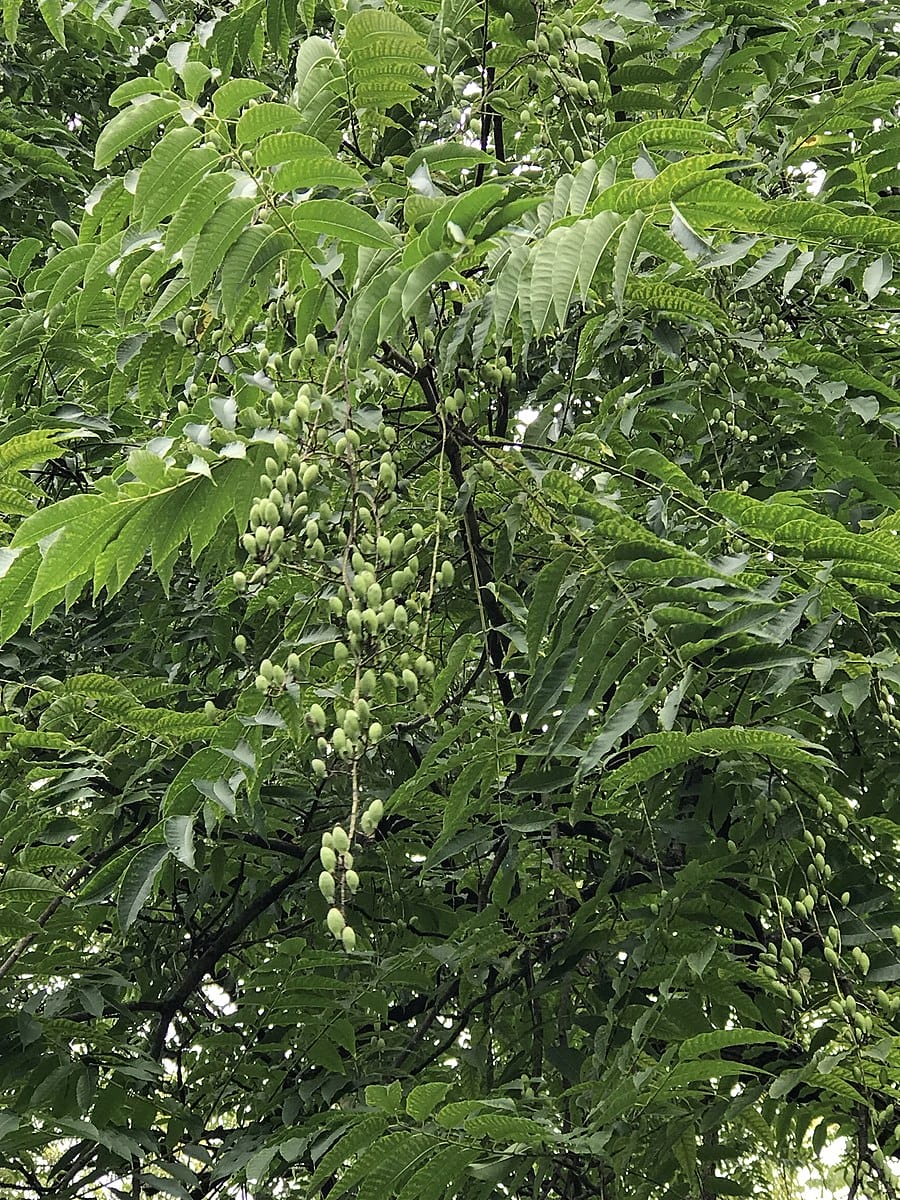Cedrela, Xiang Chun 香椿
Chinese MahogonyXiang Chun, Zhong Guo Yang Chun (TCM)
Xiang Chun Zi (Fruit, TCM)
 Revue horticole, sér. 4 (1875)
Revue horticole, sér. 4 (1875) Cedrela sinensis (syn. Toona sinensis)
Cedrela sinensis (syn. Toona sinensis)(Photo by KATHERINE WAGNER-REISS) (Wikimedia)
Botanical name:
Cedrela sinensis (syn. Toona sinensis)
The Indian C. toona (syn. C. ciliata–Indian Mahogony tree or Indian Red Cedar) is used similarly, especially for Dysentery and as an astringent. Leaves are likewise similarly used as a spasmolytic and hypoglycemic.
Parts used:
Bark; also the leaf and fruit
Temperature & Taste:
Warm, dry. Bitter
Uses:
1. Clears Damp, Stops Leakage, Resists Poison:
-Chronic Diarrhea, chronic Dysentery, Enteritis (Leaf is also used for this purpose)
-Leukorrhea with foul-smelling yellow discharge
-Urinary Tract Infection
-Gonorrhea
2. Warms and Strengthens the Kidneys:
-benefits Kidney Yang, nourishes Essences, according to some Chinese sources
-pain and weakness of the lower back and legs
-improves Sperm motility, increases function of Testes
-Anti-Diabetic effect
-also for Hair loss
3. Clears Toxin, Resolves Masses:
-Toxic Swellings, Abscesses, Scabies (Leaf)
-Cancers: Leukemia, Cancers of the Lung, Ovary, Breast, Colon, Liver etc. (demonstrated effectiveness)
-Anti-Cancer, Anti-tumor and Fibrinolytic effects demonstrated.
-topically to Snake and Dog bite
4. Stops Bleeding:
-Blood in the stool, Bleeding from the rectum
-Uterine Bleeding
5. Clears Heat, Benefits Stomach:
-Lack of appetite, nausea and vomiting (Leaf)
–stomach and duodenal ulcer, chronic gastritis. (fruit)
-Emaciation with indigestion in children; Childhood Malnutrition
FRUIT:
1. Settles Wind, Clears Cold, Eases Pain:
-eases pain coming from Cold
-Cold Stomach or Chest pain
-Rheumatic pain, Cold-type Bone pain
Dose:
Bark In Decoction: 6–15 grams
Fruit in Decoction: 3–9 grams
The young leaves and shoots have an onion-like flavor and are rich in carotenes and vitamins B and C. They are eaten as a vegetable in China.
Preparation:
The fresh shoots, when eaten, are often blanched briefly in boiling water. This reduces the nitrate content. They can then be added to salads, dishes, or stir-fried.
Substitute:
Cedrela toona of India was recommended as a substitute for Cinchona as it has an anti-periodic effect. This may
Main Combinations:
1. Amoebic Dysentery, Cedrela bark, Peach tree bark, Pulsatilla Bai Tou Weng (Barefoot Doctors Manual)
2. Bleeding from the rectum, Cedrela root-bark can be used as a solo drug.
3. Rheumatism, Joint and Bone pain, stew the Fruit with Pork. Eat the Pork and drink the Soup.
Major Formulas:
Cautions:
The leaf and fresh shoots are eaten in China. However, they are high in nitrates and nitrites show should not be eaten excessively.
Main Preparations used:
1. GENERAL / REVIEW:
–Toona sinensis: a comprehensive review on its traditional usages, phytochemisty, pharmacology and toxicology
–Ethnopharmacology, phytochemistry, biological activities, and therapeutic applications of Cedrela serrata Royle: A mini review
–Antibacterial
–Antiviral
–Anti-inflammatory
–Antioxidant
–Anti-diabetic
–Anti-tumor
–Hepatoprotective
